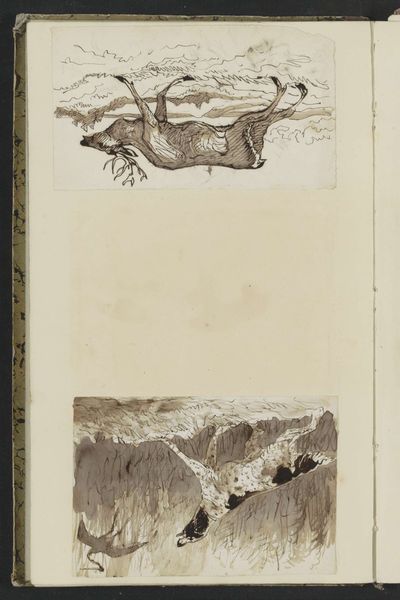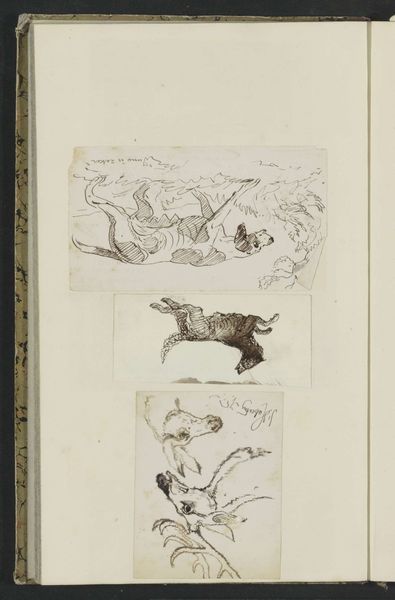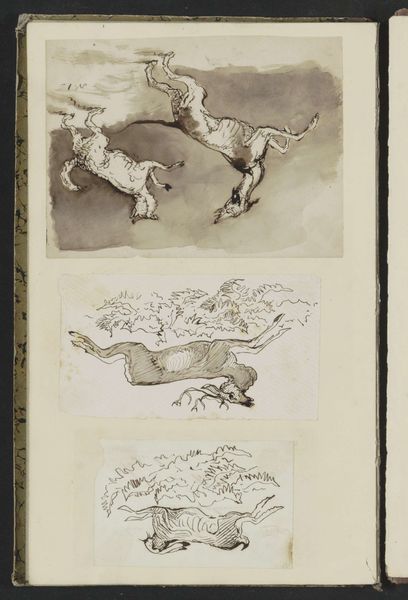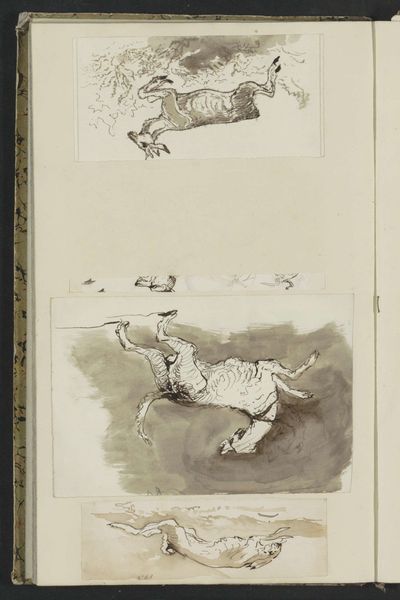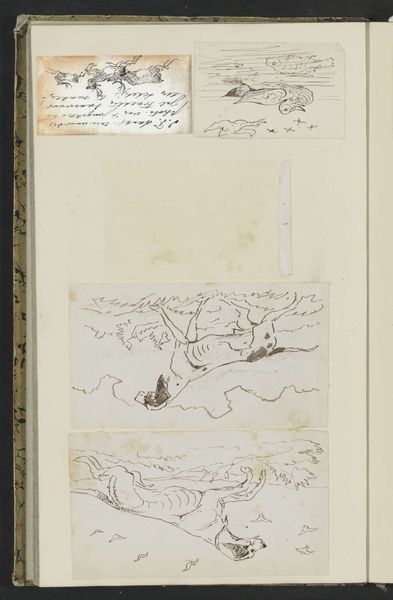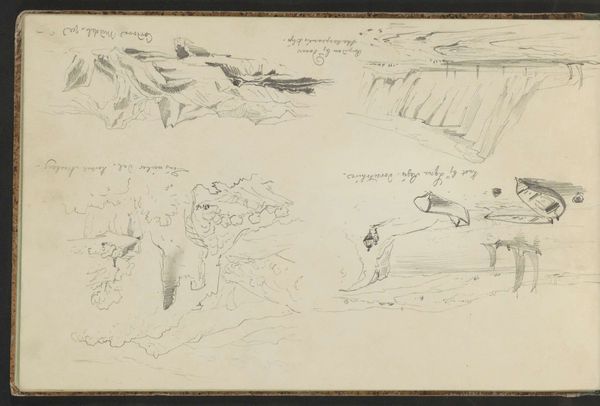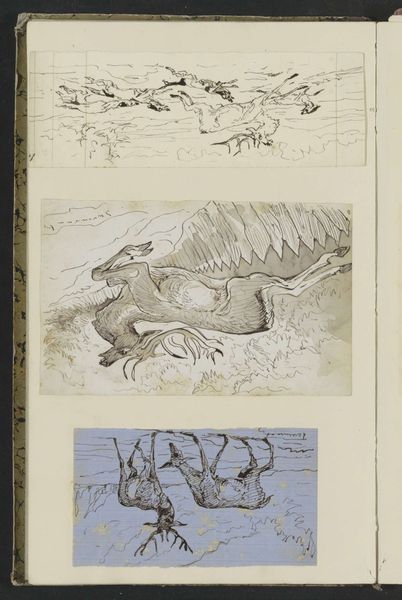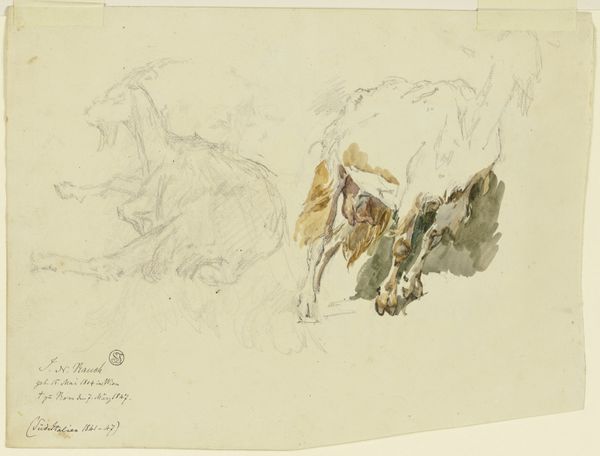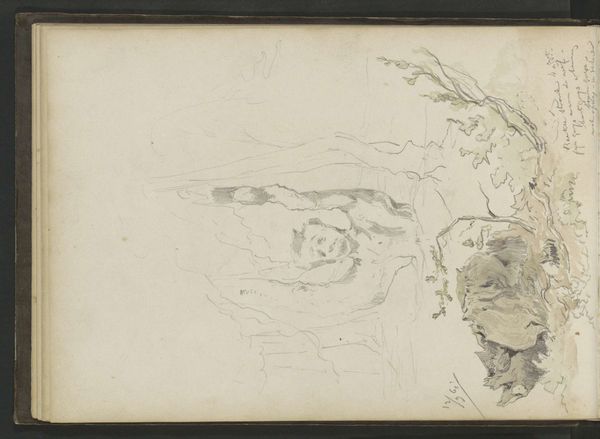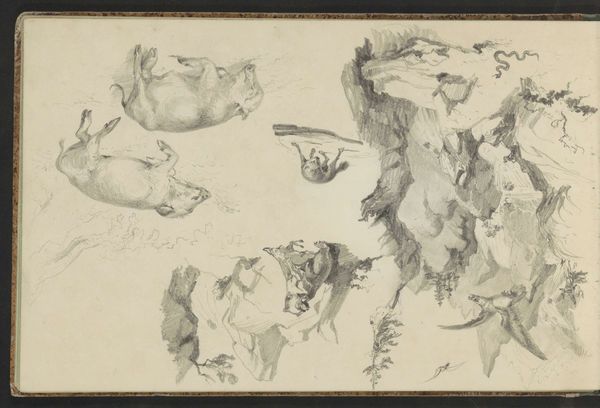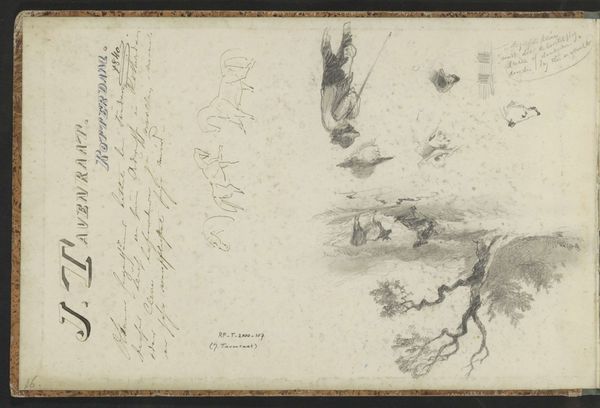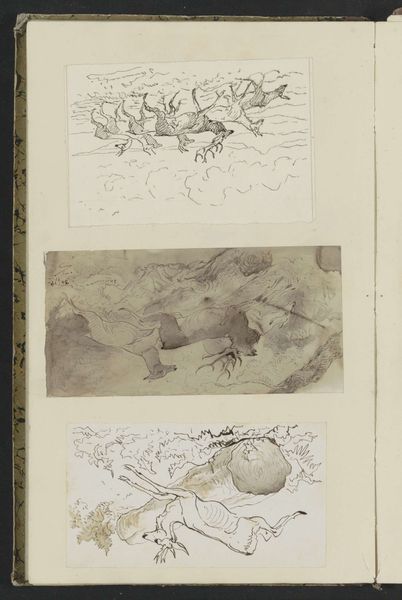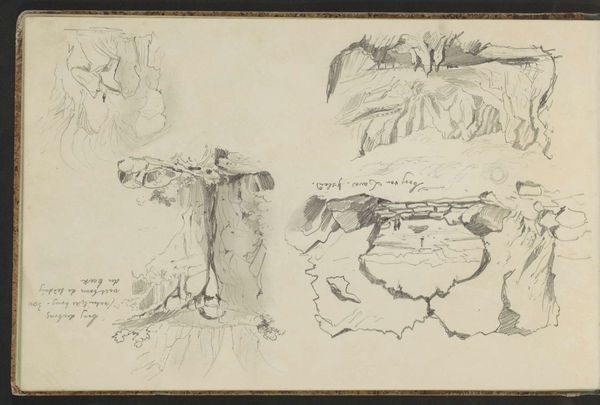
drawing, paper, watercolor, ink
#
drawing
#
animal
#
landscape
#
paper
#
watercolor
#
ink
#
watercolor
#
realism
Copyright: Rijks Museum: Open Domain
Editor: So, here we have "Wolves and Two Deer," a drawing made with ink, watercolor and paper by Johannes Antonius Canta in 1869. The composition, with its studies of animals in various poses, feels almost like a scientific illustration from the period. What do you see in this piece? Curator: I see a glimpse into 19th-century methods of artistic production. Note the combination of ink and watercolor – not just aesthetic choice, but revealing access to specific pigments, production processes of paper. It speaks to class, to the artist’s social position, and access to the *means* of creating this image. Consider how this contrasts with mass-produced prints gaining popularity at the time, how Canta is engaging, or distancing himself from industrial reproduction methods, do you notice it as well? Editor: I see what you mean. It makes me think about the skill and time required to create something like this by hand. Something more accessible could be acquired, by comparison. Curator: Exactly! And further, consider Canta's focus: wild animals, rendered realistically. The access to materials and the mastery required shows control over representing nature, or what they understand as the depiction of the animals and natural environment. The work’s placement in an album, seemingly studies for another work, speaks to artistic labor – the many steps, the drafts, the often unseen process behind a final "masterpiece." What labor, physical or creative, goes unnoticed by audiences? Editor: I never really considered how the choice of materials reflects labor or social status like that. That is an interesting aspect. Thanks for clarifying. Curator: Thinking about art this way pushes us beyond the purely aesthetic and reveals art making as a material and social practice.
Comments
No comments
Be the first to comment and join the conversation on the ultimate creative platform.
